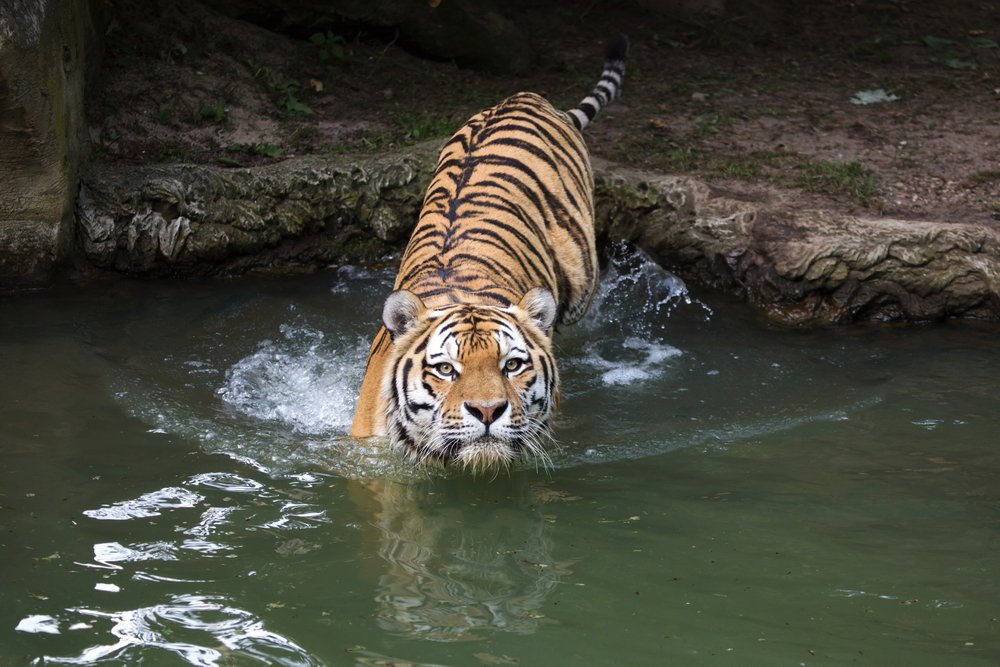The journey of tigers as apex predators began millions of years ago. Members of the Felidae family, tigers share a common ancestor with all other big cats, which split from other carnivores around 37 million years ago. The genus Panthera, to which the tiger belongs, likely emerged about 2 to 3 million years ago. This long evolutionary history has allowed tigers to develop physical and behavioral adaptations that make them formidable hunters.
Physical Adaptations

Tigers possess several physical traits that enhance their predatory capabilities. Their muscular build, coupled with powerful forelimbs, enables them to tackle prey much heavier than themselves. Furthermore, retractable claws and large paws provide a stealthy advantage when stalking prey. Their sharp teeth and strong jaw muscles are designed to swiftly kill and dismantle prey, making them efficient carnivores.
Camouflage and Ambush Tactics

Tigers have adapted to their jungle habitats with a distinctive coat of fur that helps them blend into their environment. The vertical stripes serve as camouflage in the dense vegetation and dappled sunlight typical of tropical forests. This allows them to silently approach and ambush prey, a hunting strategy that requires precision and patience. Camouflage is crucial for getting close to unsuspecting prey, minimizing the chance of detection before attack.
Acute Senses

A tiger’s predatory success is partly due to its highly developed senses. Their night vision is exceptional, six times better than humans, enabling them to hunt effectively in the dark. Additionally, keen hearing and a highly sensitive sense of smell allow tigers to detect prey or other predators from afar. These heightened senses are essential for survival in dense jungle environments where visibility is limited.
Diet and Hunting Skills

Tigers are obligate carnivores, meaning they rely entirely on meat for nutrition. Their diet primarily consists of large ungulates such as deer and wild boar. However, tigers are adaptable and will prey on smaller animals when necessary. They are solitary hunters, relying on their stealth and strength to capture prey. Their ability to bring down prey significantly larger than themselves underscores their status as apex predators.
Territorial Behavior

Maintaining large territories is another critical aspect of a tiger’s life. Each tiger’s range can extend up to several hundred square kilometers, depending on prey availability and habitat quality. Establishing such extensive territory ensures access to sufficient prey and mating opportunities. By being territorial, tigers reduce competition with other tigers, reinforcing their role as apex predators in their ecosystems.
Reproductive Strategies

Tigers have developed specific reproductive strategies to ensure survival and continuity. Females usually give birth to litters of two to four cubs, with intervals of two to three years. Caring for cubs requires a secure and resource-rich territory, as mothers must provide and protect their young until they reach independence. The survival of offspring is vital for maintaining their population, ensuring that tigers continue to thrive as top predators.
Role in the Ecosystem

As apex predators, tigers play a crucial role in maintaining the balance of their ecosystems. They help control prey populations, which in turn affects the vegetation and overall health of the habitat. By preying on the weak and sick, tigers ensure that prey populations remain robust and resilient. This top-down regulation is essential for biodiversity and ecosystem integrity.
Conservation Challenges

Despite their formidable nature, tigers face significant threats from human activities. Habitat destruction, poaching, and conflict with humans have led to drastic reductions in their populations. Conservation efforts are critical to preserving these majestic creatures and their roles as apex predators. Protecting tiger habitats, enforcing anti-poaching measures, and fostering coexistence with local communities are vital steps in ensuring their survival.
Future of Tigers in the Wild

The future of tigers as apex predators depends on global conservation efforts and sustainable management practices. With committed conservation initiatives, tiger populations can recover and maintain their ecological roles. The continued survival of tigers is symbolic of the health of lush jungle ecosystems, highlighting the broader importance of conserving biodiversity worldwide.






